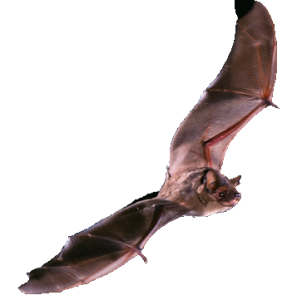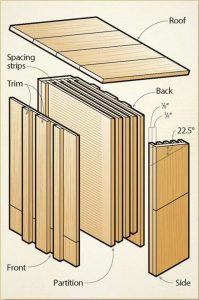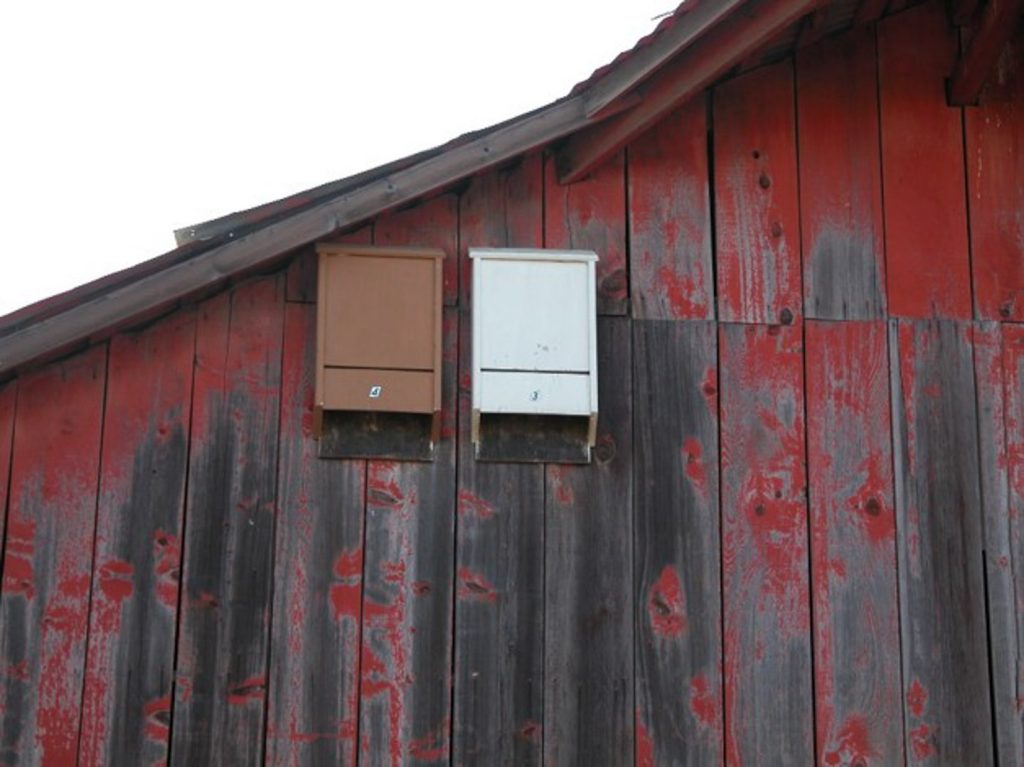
Mounting a bat house on your property is the perfect way to help bats who are in need of a safe place to live while protecting your yard from pesky night-flying insects.
It is also a great way to get involved in bat conservation. Habitat loss is a major problem for bats, and putting up a bat house can give your local bats a safe and comfortable place to live.
Interested? Here are some resources that can help:
- You can build your own bat house
- If you don’t want to build one, you can also purchase a bat house
- Proper bat house installation is very important
Build a Bat House

Details are important If you want to build your own bat house. If you don’t build something that meets certain critical criteria, bats won’t use it. You want something that provides protection from the elements, a thermal gradient so they can choose the temperature they want, a durable gripping surface, and proper ventilation. The most successful bat houses have chambers that are at least 20 inches tall and at least 14 inches wide, but taller and wider is better.
Here are some plans for a variety of bat houses:
- Multi-chamber bat house (the best general purpose style)
- Single-chamber bat house – multi chamber is better, but this is simpler to build
- A Rocket Box is easy to mount on a pole, works for bats who live under bark
Additional bat house building resources:
- The Wood Workers Guild of America has a great page on How to Build a Bat House.
- For detailed information on building a bat house, see Merlin Tuttle’s Bat House Builder’s Handbook.
Purchase a Bat House
If you would rather purchase a ready-made bat house, there are many options available.
However, some suppliers provide better products than others. We’ve not been able to review all of the products that are available. Here’s a list of suppliers that includes some local providers that we are familiar with, and some that are recommended by Merlin Tuttle’s Bat Conservation.
These sites are listed alphabetically:
- Austin Batworks
- BatBnB
- Bat Bungalows
- Bat Conservation & Management
- Habitat for Bats
- John the Woodpecker (custom bat houses in Nice, near Clearlake, in Northern California)
Bat House Installation
How and where you install your bat house is just as important as how it is constructed.
- Bat houses should be mounted on buildings or other large wooden or concrete structures.
- It is best to install bat houses at least 12’ from the ground (15′ to 20′ is better). Bats don’t want to be too close to the ground, and predators.
- Bat houses should receive at least six hours of daily sun exposure. Generally we recommend that it be mounted facing east, to get the morning sun, but south works also. You are trying to maximize the amount of time that the box temperature is between 80° F and 100° F.
- Mounting on a pole may work well in climates that are moderate to hot, without extreme temperature variance. We find that they don’t get occupied as often as bat houses on a building (properly located). If you do mount on a pole, it may work best if you have two bat houses mounted back to back to increase temperature retention.
- Avoid mounting a bat house in trees. In California, we rarely see bats occupy a bat house mounted in a tree. It is too easy for predators to access the box. Aim for 20′ to 30′ from the nearest tree if possible.
- Don’t let wasps nests accumulate. If they do, they should be removed in late winter or early spring before either wasps or bats return.
- If you are installing a bat house on a farm or other large property, it works best if it can be placed within a quarter mile from a permanent water source, such a canal, pond or stream.
- Consider adding a bat house pup catcher. Bat houses in warmer areas, such as the Central Valley, can sometimes overheat, and pups may fall out due to the stress. Overcrowding can sometimes be a problem, also. This would be a nylon mesh pouch that you would mount at least 24 inches below the opening in the bat house. Fallen bat pups will be able to crawl back to the bat house if you build the catcher properly! Note that you may have to clean guano out of the pouch periodically.
- Be patient – it can take several years before bats decide to move in. But if you don’t have any occupants after 3 years, you might consider moving the bat house to another location/orientation.

Bat houses high on a barn
For more information see:
- Criteria for Successful Bat Houses
- Well-placed bat houses can attract bats to Central Valley farms
- Western Bat Specialists will install bat houses in locations in Northern California
